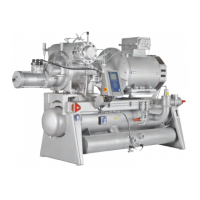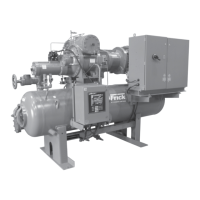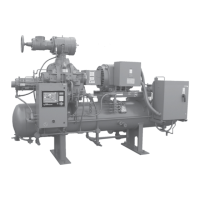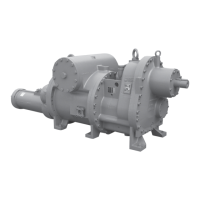Engineering manual - SAB 193-233-283 S A-frame (including ATEX)
008831 en 2020.10
31/168
Safety precautions
3.2.13 Protecting the operator as well as the environment
Industrialisation affects our environment and it is therefore essential that we do what we can to
minimise the harmful effect on nature.
Many countries have passed legislation in an effort to reduce pollution and preserve the environ-
ment. This legislation applies to all fields of industry, including refrigeration, and must be com-
plied with.
Pay extra attention to the following substances:
• Refrigerants
• Cooling media (brine etc.)
• Lubricating oils
Refrigerants usually have a natural boiling point considerably below 0°C. This means that liquid
refrigerants can be extremely harmful in contact with skin or eyes. High concentrations of refrig-
erant vapours can be suffocating when they displace air. If high concentrations of refrigerant va-
pours are inhaled, they will attack the human nervous system.
When halogenated gases come into contact with open flame or hot surfaces (over approximately
300°C), they will decompose to produce poisonous chemicals. These have a very pungent odour
and will therefore warn personnel of their presence.
At high concentrations R717 causes respiratory problems. When the amount of ammonia vapour
in air is between 15 and 28 vol. % the combination is explosive and can be ignited by an electric
spark or open flame.
Oil vapour in the ammonia vapour increases this risk significantly as the point of ignition falls be-
low that of the mixture ratio stated.
Usually the strong smell of ammonia will warn personnel before the concentration be-
comes dangerous.
The following table shows the values for the max. permissible refrigerant content in air measured
in volume %. Certain countries may, however, have official limits different from the ones stated.
Halogenated refrigerants
HFC HCFC Ammonia CO
2
R134a R404A R407C R507 R22 R717 R744
TWA
Time weighted
average during a
week
Unit
0.1 0.005 0.5
vol. % 0.1 0.1 0.1 0.1
Warning smell vol. %
0.2 0.002

